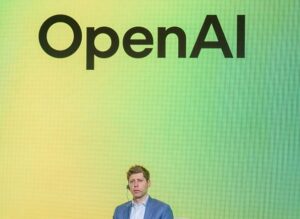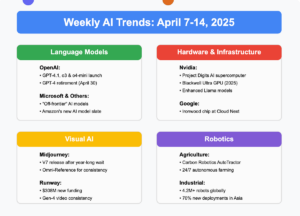Former OpenAI Founder: 99.9% of Content Will Be Customized for LLMs

The Impact of AI on Content Creation
In recent times, we’ve seen a surge in discussions surrounding the role of artificial intelligence (AI) in our lives, particularly regarding tools that assist with content creation. Over the weekend, a vibrant conversation unfolded about our new article comments system, revealing positive sentiments about how AI tools could enhance our experiences. Nonetheless, critical viewpoints also emerged, particularly from former OpenAI founder Andrej Karpathy.
The Concerns of AI-Centric Content
Karpathy has presented a provocative outlook on the future of online content, suggesting that by 2025, an overwhelming majority of web content could be tailored more for AI models than for human readers. This shift, as he notes, could lead to a situation where 99.9% of online content caters to large language models (LLMs), significantly transforming our digital landscape.
Human vs. AI Consumption of Content
It’s important to understand that the way people consume information vastly differs from AI. Humans tend to seek out coherent narratives and structured paragraphs, often skimming content for bits that capture their interest. On the other hand, AI operates through structured data, concentrating on clear, unambiguous information without preferences related to font size or paragraph formatting. Given this fundamental difference, there is a growing concern among professionals across various fields regarding the potential cannibalization of human jobs by AI technologies.
Dual-Publishing Solution
In light of these discussions, a potential remedy emerges: the dual-publishing strategy, a concept highlighted by various experts, including discussions on Medium. This strategy encourages authors and publishers to create content aimed at two distinct audiences—humans and AI.
How to Approach Dual-Publishing
Content for Humans: This type of content will likely include storytelling elements, detailed explanations, and relatable examples that draw readers in and keep them engaged. This human-centric content is designed to resonate with our natural inclination for narrative and context.
- AI-Optimized Content: For content aimed at AI tools, the focus shifts to structured data. This can include tagging, reasoning annotations, and clear categories. Such content is not only technical but also optimally arranged for easy processing by AI algorithms.
Incorporating metadata layers into both types of content could provide a bridge between AI and human readers. Metadata can enable AI systems to understand and interact with information effectively, enhancing how technologies engage with content without disrupting the reader’s experience.
The Growing Popularity of AI
The adoption of AI has significantly increased across various sectors. Companies including OpenAI, Anthropic, and Google are actively working to develop advanced AI models. However, they face challenges, primarily due to a lack of high-quality, accessible content needed for training these AI systems.
Former Google CEO Eric Schmidt has challenged claims that progress in AI development is stalling due to limitations in available content. He firmly stated that there are no significant obstacles ahead, and the race towards more sophisticated AI continues. Sam Altman, CEO of OpenAI, echoes this sentiment, suggesting that there are no barriers halting this advancement.
Copyright Considerations
Despite the advancements, there are ongoing concerns about copyright infringement. Numerous complaints have been lodged against major AI companies like Microsoft and OpenAI regarding the use of copyrighted material in their training datasets. Altman has acknowledged that constructing tools like ChatGPT necessitates access to some copyrighted content, indicating that the development of AI tools exists in a gray area of copyright law.
As these challenges persist, the attention now turns to whether authors and publishers will adapt to include AI in their strategies for reaching a broader audience.
In an era where AI tools are steadily becoming ingrained in our everyday activities, the way we create content is likely to evolve. It remains to be seen how individuals will respond and whether they will embrace innovative writing techniques that account for both human and AI audiences.





